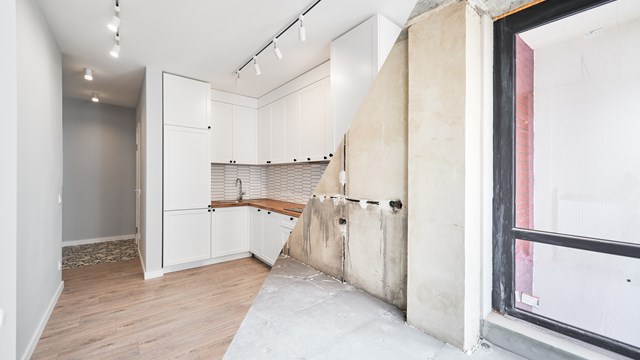Nothing can take the fun out of a design project faster than missed deadlines and cost overruns—and naturally, both problems usually go hand in hand. Even if a project is certain to increase a property’s value and/or curb appeal, the upheaval and disruption to residents’ lives while work is going on can be a big pain.
Any number of problems can contribute to a project dragging on and on for months or bursting its budgetary boundaries, but for the most part, there are a few repeat offenders when it comes to figuring out what went wrong and how it can be avoided in future. Quibbling over design elements, budget problems, lack of organization, and poor communication between involved parties can all contribute to the problem—preventing them can help your next design project go more smoothly and successfully.
Design Changes
“More often than not, it’s a change in the design that causes delays in the process of interior renovation,” says Dalah del Prado, a project architect with Dattner Architects in Manhattan. “We have had experiences where we have already started demolition and then the client changes their mind about design decisions—that holds things up substantially.”
Good planning is crucial, adds Marilyn Sygrove of Manhattan’s Sygrove Associates Design Group Inc. “If, for example, a building is renovating its doorman station, and they have purchased new equipment without providing cut-sheet specifications, that can hold up the process.”
“Once you start, any changes that are made in the design just cause a ripple effect of time consequences,” says Howard L. Zimmerman of Howard L. Zimmerman Architects PC in Manhattan. “If a client says ‘I don’t like this—I want to change it to that,’ there’s probably electric involved, duct work involved, ventilation, maybe plumbing…. so each trade has to be called in again, in a certain sequence, to undo what has already been done and do it again in a different layout.”
Planning is the key, continues Zimmerman, and making decisions beforehand. “The worst thing they can say is ‘We’ll figure it out in the field.’”
Vendor Deliveries
Another huge timer-waster is waiting for goods and materials to arrive at the site, says Sygrove. “If there is equipment that has to go in on the wall or ceiling, the [wall or ceiling] can’t be closed, and the finishing will be held up until the equipment can be delivered and installed.”
Also, if the designs call for a special tile from Italy, for example, or a special piece of air conditioning equipment, they must be pre-ordered, because they have long lead times, says Zimmerman, who adds, “Be sure to order enough materials. If you have a special stone from Europe that needs to be ordered 14 weeks in advance of the start of the project, it’s no good if you run out of it in the middle of construction, because it’ll take another 14 weeks to get more.”
Sometimes materials are delayed because of reasons other than planning, says Sygrove. “In these economic times you have to be very careful of who you give deposits to, because if companies are not financially secure you could lose your money.”
Sygrove gives another example: “If you order 300 light fixtures, and the delivery is made of 300 fixtures to the job site and the building signs for it, then finds out that only 200 fixtures were delivered, this will hold things up. It is impossible to open all 300 boxes at one time.”
Common Onsite Delays
For residents whose lives are inconvenienced by construction, the sight of men who should be working just sitting on eternal breaks is a source of consternation. Idle workers are not always a sign of a poor work ethic or contractor delays, however. “More often than not, contractors are ready to start and the client will say ‘Not yet—we’re not ready to hand over the space,’ or there’s some other reason,” says del Prado. “Once a project is awarded, [the contractor] should already have their sub-contractors in place. They just need a schedule, and once the schedule is done, they can begin. If there are changes or delays, the workers have to wait until it is sorted out.”
“When doing demolition, contractors can also find unforeseen site conditions, which are things that absolutely cannot be predicted,” explains Sygrove.
“There are certain circumstances where you just don’t know what you are going to find when you start demolition, and the decision about what to do with it can hold up the project. For example, in a hallway we worked on, there were light fixtures that were installed horizontally across the ceiling. Until those fixtures were taken down during the process, there was no way to know that the junction box was off to the side, which required additional work to access.”
“Usually these hidden conditions cause most of the delays,” says Zimmerman. “Beams, columns, gas pipes, risers, things that the designers didn’t know about in advance. The best way to look for possible issues is to do probes beforehand, so that you can flush out as much of the unknown as you can. It’s harder to deal with surprises while you’re under construction.”
Another source of delays is the permit and approval process, says del Prado. “In the ideal case, you want to get permits before the process begins, and sometimes there can be a delay from the Department of Buildings (DOB) to process the permit, and then once it is approved, there is time involved in approving the contractor.”
Property Managers
“Property managers are crucial to the process,” says Sygrove. “They are the ones that get the checks cut, which is critical to getting things ordered. We like them to be at the project site, because if something needs to be communicated to the shareholders, they are the vehicle of communication, and they are the ones that know about existing equipment.”
“Property managers deal from the building management side,” adds Zimmerman, “coordinating the building staff, and notifying the residents as to what’s going on, what progress to expect, what inconveniences to expect. They keep the flow of information going. The architect and the contractor should coordinate from the construction side, with the property manager as the go-between.”
Some projects will have construction manager on board to help things stay on track, says del Prado. “It’s really up to the client if they want to go that route. It’s an extra fee and it usually depends on the size of the project. That’s something that the client would hire for directly.”
Sometimes having an outside agent to keep pressure on timeliness and progress and coordination can be helpful. “There are construction management companies, and project management companies that offer construction management services,” says Zimmerman. “Depending on the size of the project, the fee is usually a percentage—sometimes between five and 10 percent.”
Reasonable Expectations
Let’s go back to the idle worker scenario for a moment: there are things that happen during the course of a project that may not be immediately evident to those who are living in and passing through the buildings.
Sygrove’s office has developed a list of things “civilians” should know or expect during a project’s progress. “For example,” she says, “there may appear to be lapses in work at the site, but in fact work may be being done in the shop or off-site, and the contractor has to wait for these items to continue work. We try to make sure that this is minimized, but you can expect this to be the case at some point.”
“Sometimes building residents will be in an uproar because no one has been working on their floor, or crews have been working on the lobby for two weeks,” continues Sygrove. “If you tell the building residents that these are things that they should expect, it usually helps to make the process go more smoothly.”
Cooperation from the residents can be critical to completion of any project that requires access to individual units. Lack of access can hold up the process— so advance notice can help smooth the timing of the repairs or project. Changing of the door hardware for example will require access.
Another area of potential friction is the difference between what residents are expecting and the industry standards that establish what constitutes satisfactory work. “Drips of paint on the door are a good example of this,” says Sygrove. “Unless the building is willing to go to the expense of stripping the door to raw metal, all the contractors are going to do is lightly sand a drip—and it will likely still appear through the new coat of paint. That is an industry standard—it will require additional investment to strip the door to get rid of the drip.”
Tips
“Believe it or not, it’s getting more difficult to work, and we are always looking for ways of streamlining the process,” says Sygrove. “To that end, we have developed a couple of strategies: a client responsibility checklist, which are things that the client should be responsible for before the work begins, and a weekly regimen during construction.”
• Before the project begins the client should:
• Remedy any building violations or issues that may delay the permit process
• Sort out asbestos or other hazardous materials issues
• Sort out any leaks or other water issues
• Get accounting advice on whether the project in question qualifies as a capital improvement
During construction there should be:
A written job schedule that is updated weekly
Weekly site meetings with management, representatives from the board, the super and the design firm
Notes generated from this meeting which are distributed weekly, and in those notes it will say ‘management needs to do this, board needs to make this decision, electrician needs to do this work, designer needs to reselect this element, etc.’
“Each week you review this work, so that there is a running list of tasks that all parties can review, perform, and clarify. It’s really the only way to keep a project moving forward efficiently because there are so many different people involved.”
Every aspect of running a successful, harmonious building requires good communication skills and the willingness to compromise between expectations and reality. This is especially true when navigating a major renovation or design project—but with cooperative effort and good planning, even the most complex project can be pulled off successfully and with minimal inconvenience.
Denton Tarver is a freelance writer living in New York City and a frequent contributor to The Cooperator.







Leave a Comment